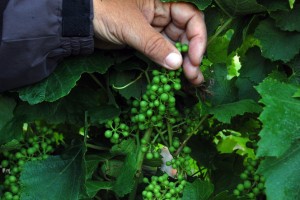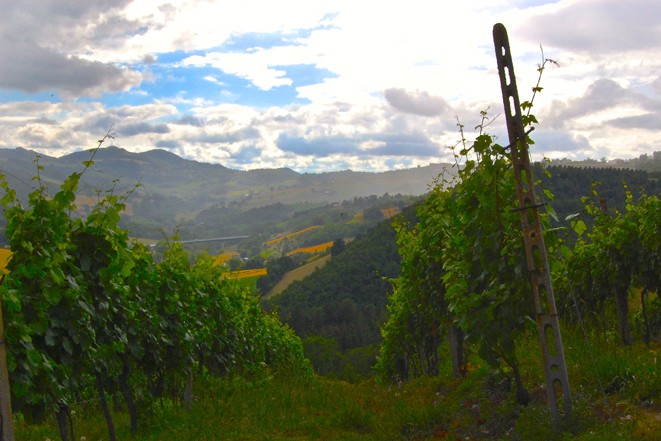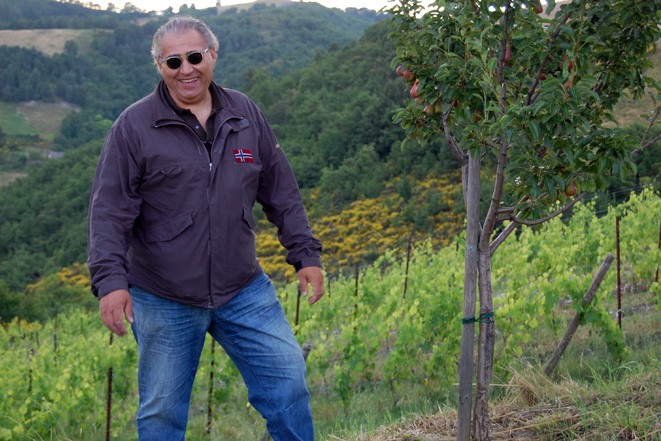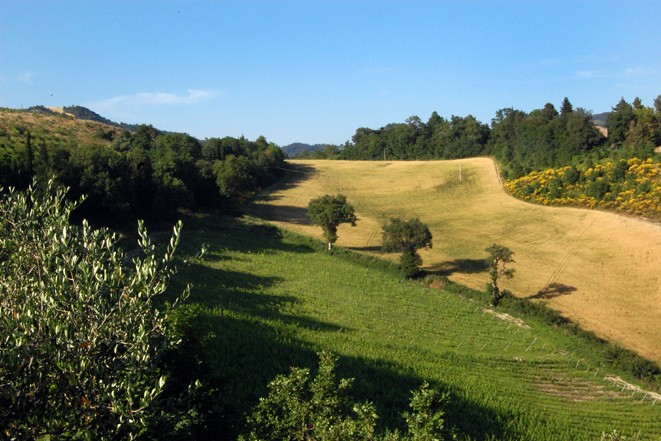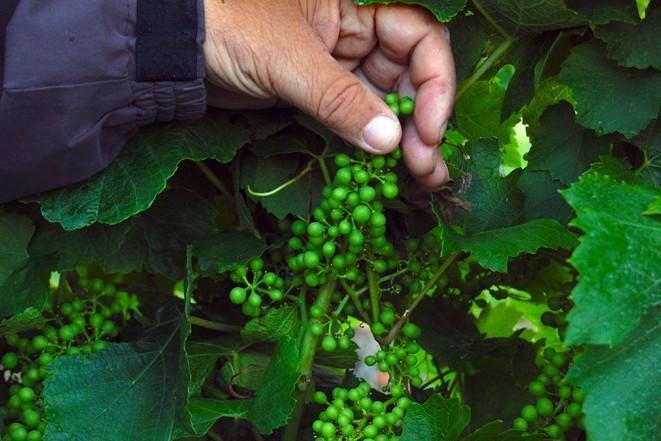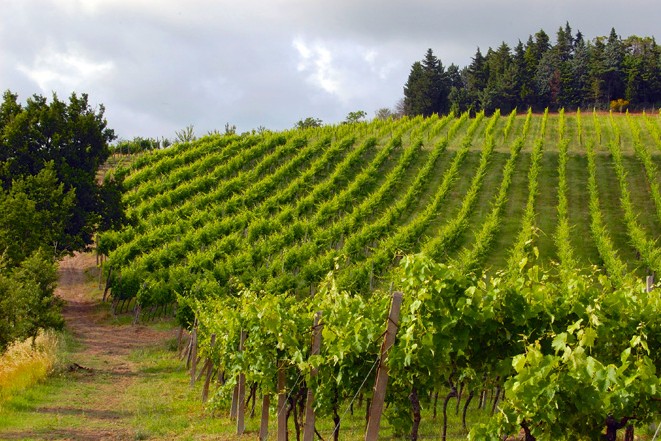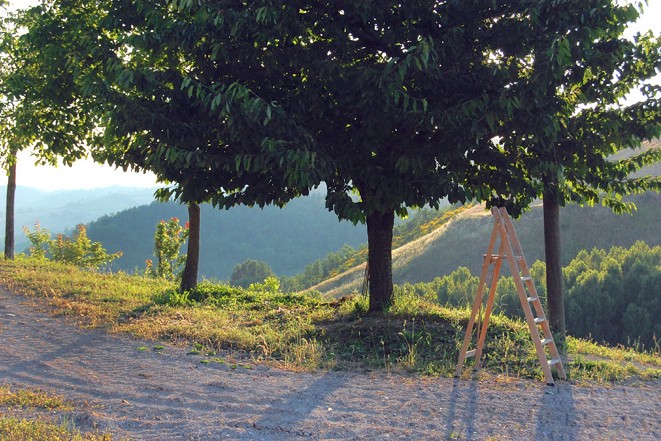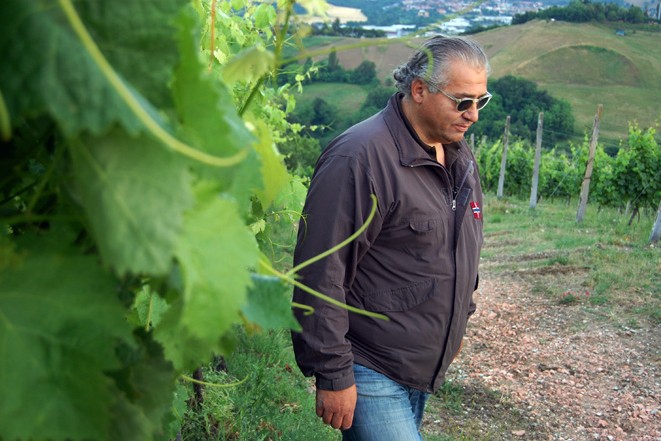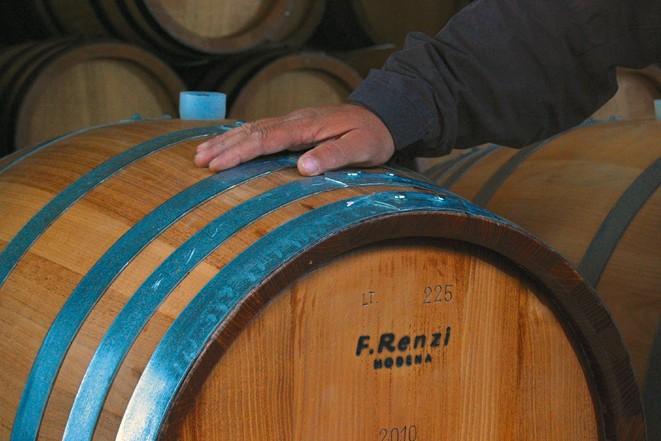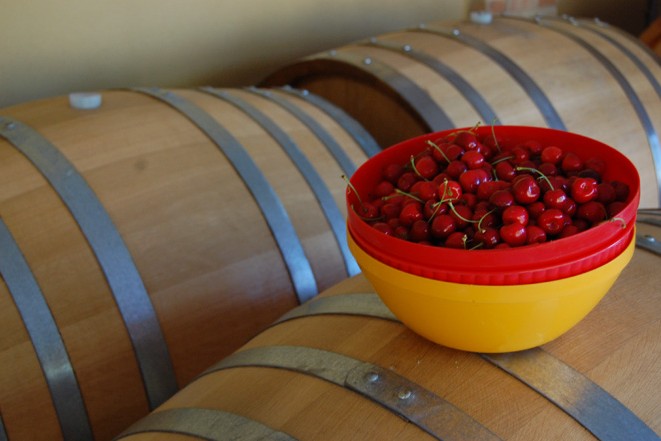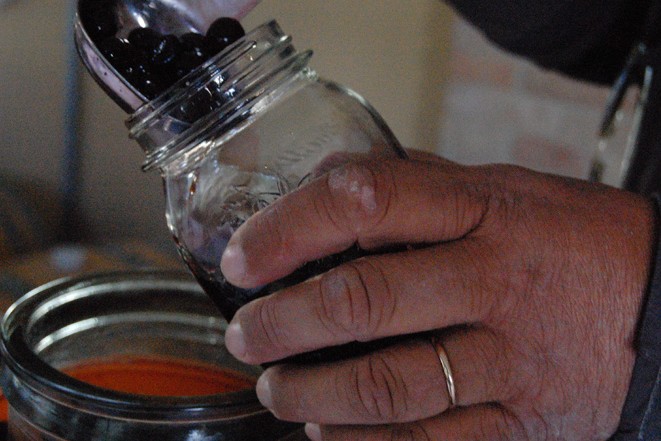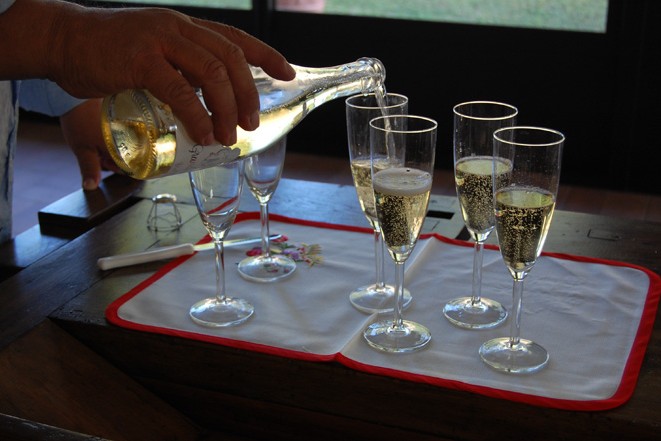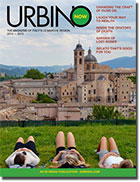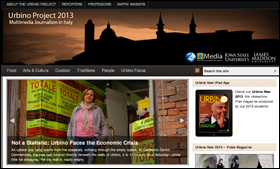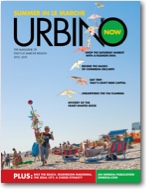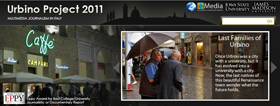Un-corking Urbino’s First Winery

Urbino native Leonardo Cossi returns to his roots with Ca Sciampagne
URBINO, Italy – When Leonardo Cossi decided in 2008 to make his passion for wine his livelihood, he was familiar with this old piece of piece of black humor: “The best way to make a million in the wine business is to invest three million.”
But instead of taking that truism as a warning, Cossi accepted it as a challenge.
Six years and just under $4 million later Cossi is standing on a sun-kissed hillside outside the Renaissance city of Urbino ready to cut the ribbon on Ca Sciampagne – House of Champagne – the newest winery in the province.
“I am a Capricorn,” joked Cossi, speaking through an interpreter. “I know I am both stubborn and persistent. That is why I think my business will work out.”
Cossi’s story is becoming a familiar one in Le Marche (pronounced Lay Mar-kay), the region in central Italy between the Adriatic Sea and the Apennines Mountains, which has begun a concerted effort to elbow its way into the front ranks of one the world’s most renowned wine-growing countries.
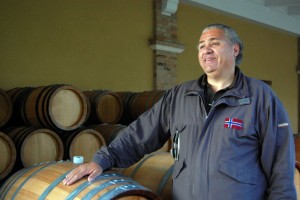
Even with a year to go before Ca Sciampagne officially opens, Leonardo Cossi wine has already started to age wine in several oak and cherry barrels.
The Marche has long been one of the smallest wine producers of the country’s 20 regions. For example, in 2012 the Marche produced 24.2 million gallons compared to the Vento region that topped out at 199.4 million gallons. And historically when wine writers toured the Marche, they were interested only in its indigenous white, Verdicchio.
But over the last decade, things have begun to change. The region’s red wines are gaining respect, and the number and quality of wineries has grown. The hills between Urbino and the coastal city of Pesaro have been part of that development.
Terracruda, opened in 2005, has already become one of the area’s most successful new wineries. Located near the small town of Fratte Rosa about 19 miles from the coast, its 50 acres have flourished. The guide, “Good Wines of Italy (2014),” deemed their Lubaco as a “wine not to be missed.” In 2011, Terracruda’s Bianchello swept both gold and silver medals at the International Competition in Lyon France.
But Cossi isn’t aiming to match Terracruda. He hopes to surpass it.
“To me, Terracruda is a middle quality winery and it has a good quality-to-price ratio,” admitted Cossi, “It is a respectable winery, in any case.”
While Terracruda’s facility is a modern layout, Cossi is in the process of finishing a winery that is compatible with the surrounding landscape and history of the Urbino area. The décor throughout the still-rising complex is full of historic detail. The floors are made of used oak wine barrels and every piece of furniture is an antique or family heirloom.
Cossi, an Urbino native, said he couldn’t find evidence of a previous winery to ever operate so close to Urbino, even though there were 40-year-old grape vines already on the property when he bought it. He hopes eventually to earn the DOC – Designation of Origin – for the Urbino area.
The Marche region already has 13 varieties of wine labeled DOC. To qualify, the wine makers must follow very strict rules set by the DOC board. These rules ensure that the method of wine production is ethical and check to see if the procedures match the guidelines.
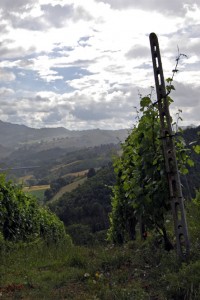
When Leonardo Cossi bought the property, forty-year-old grape vines were already planted there and remain there today.
The DOC label doesn’t denote quality, Cossi pointed out, because even the simplest of table wines can qualify for the label. But he knows wine enthusiasts rely on it to confirm the type of grapes the wine was made of and the terrain they were grown in. And he said the designation would help convince people – even his fellow Urbino residents – he can produce valuable wines in his hometown.
“Like the tall city walls, the people in Urbino can often be close-minded,” claimed Cossi, “so, it will be a challenge to persuade them to come.”
Although Ca Sciampagne only started selling wine to local shops and bars this year, the cellar is already storing 27,000 bottles. Currently eight different grape varieties are growing, including Bianchello del Metauro , Sangiovese dei Colli Pesaresi, Chardonnay, Sauvignon Bianco, Aleatico and Alicante.
If all goes according to plan, Cossi said, Ca Sciampagne will be producing about 50,000 bottles per year. And if he can sell 30,000 to 32,000 of those bottles each year, he can avoid becoming part that old joke about the wine business.



